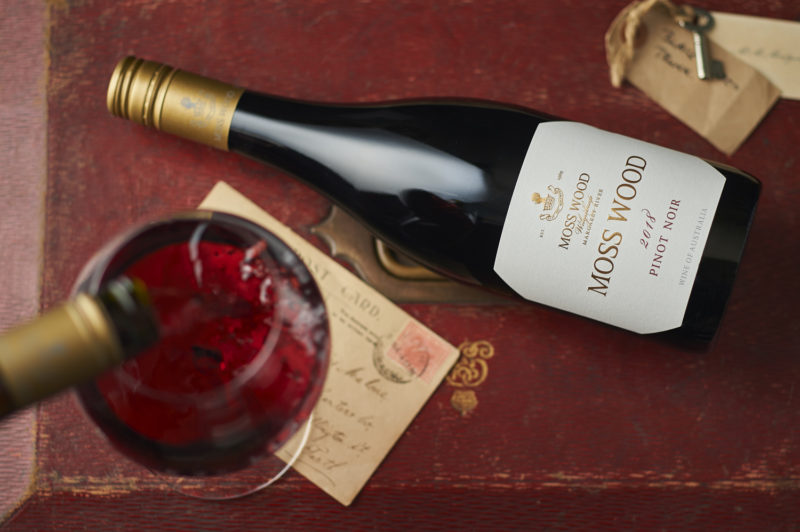Moss Wood 2018 Pinot Noir – David Prestipino, WA Today

Moss Wood 2018 Pinot Noir – David Prestipino, WA Today
WA dances with wine’s most maligned (and magical) variety
Western Australia’s curious and creative winemakers have long strived to show our hand at mastering new grape varieties foreign to our shores, with worthy success.
Spicy, bright, ripe-driven reds such as Tempranillo (Spain) and Zinfandel (California) and minerally, fruit-driven whites like Italy’s Fiano and Vermentino varieties are some of the incarnations of various clones introduced and nurtured here in WA and interstate.
While plantings of these and others such as Pinot Gris and Sangiovese are relatively recent, another with established roots – regarded as the world’s greatest – is one most winemakers regard as the holy grail.
Pinot noir would be the bottle of choice for most wine retailers, experts and nuffies who may find themselves on death row. Without hesitation their go-to in an hour of need or greed.
The ancient eastern French vine (geographically named Burgundy there) carries many clones, each with enormous variation on quality, and especially dependent on where it is planted. No grape is more sensitive to the nuances of climate and terroir, which makes pinot noir the most honest and open of all the varieties – good, rad or ugly.
When on song, its beguiling charm and divine expressions can transport the senses to new dimensions, and drop winemakers to their knees if their toil was fruitless.
As UK wine writer Simon Woods wrote: “Great burgundy is like an orgasm. If you’re not sure whether you’ve had one or not – you haven’t. And if you have had one you want another as soon as possible.”
Good pinot noir can be seductive, silky, exotic, spicy, floral and fruity, all at once. A wine of intriguing personalities and characters, a choir of enticing flavours that slowly unveils its soul and captures the heart and senses.
Prices of the very best pinot noir in Burgundy can be catastrophic. These are usually classified grand cru, and the few I’ve tasted left me spellbound, like time stopped as the wine danced glorious and gracefully around.
It’s the quest for greatness that makes the grape irresistible for many a winemaker and winery owner, but one that often ends in heartbreak at much expense.
The variety’s greatness hinges on crucial elements such as vineyard site, clone selection, attention to detail and vintage conditions moreso than our traditional varieties of shiraz, cabernet, riesling and chardonnay.
Many winemakers have been left wanting in the winery after pinot harvest, frustrated by the challenges and nuances required to produce a good one. It’s a frustration shared by pinot-loving wine consumers faced with the hefty expense to experience greatness.
WA is blessed with high-quality renditions of cabernet, shiraz or riesling from $20, but any pinot worth drinking begins at $30 – and that’s the tip of the iceberg for those chasing glory.
But that’s a win in itself. Pinot Noir is grown in few places across Australia (notably Yarra Valley and Geelong in Victoria and Tasmania) but WA’s wine industry has a knack of punching above its weight, as it has with pinot, with fine examples that each show glimpses of its majesty.
Two of our cooler climes regions in the Great Southern (where eight per cent of total wine grape crush is pinot, mainly in the Porongurups and Denmark) and Southern Forests (where pinot accounts for 33 per cent of the wine crush, mainly in Pemberton and Manjimup) produce esteemed pinots in the $30-$60 range.
In warmer Margaret River, Moss Wood has bucked the trend for some time, as has nearby Pierro, both slightly dearer renditions in a region where pinot noir comprised just one per cent of total wine grape crush last vintage.
. . .
Moss Wood 2018 Pinot Noir
You don’t get a lot of pinot in Margaret River, but regional pioneers Moss Wood has made it for as long as they have their more reputable cabernet and chardonnay. The 2018 is a 50-50 blend of the D4V2 and D5 clones planted on the estate. Dried herb, clove, cedar and minty notes and deft red fruit are combed and wrapped by a silky fine texture and refined dusty tannins.
